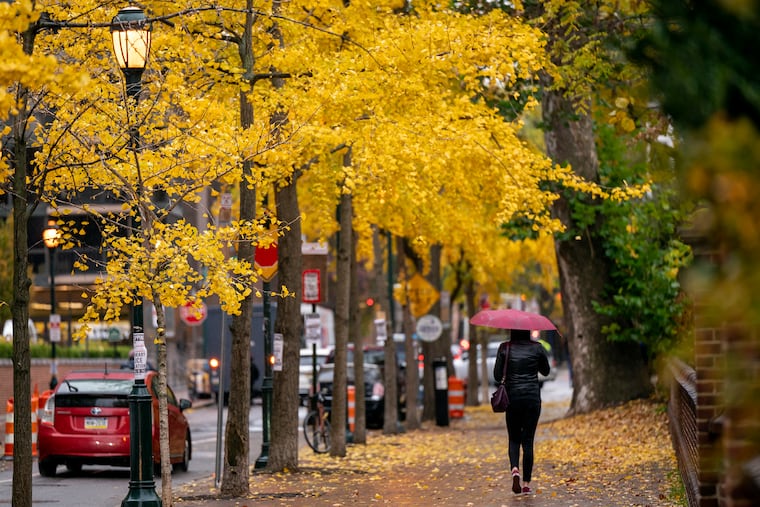Ginkgo’s golden moment in Philly has arrived
The ginkgo tree is like the cockroach, but more widely beloved.

The oldest ginkgo tree in North America lives at Bartram’s Garden, planted in 1785 by the garden’s eponymous botanist — but the ancient tree flourishes on streets all over the city. Each fall, the fan-shaped leaves turn butterscotch yellow and then, often in a single day, drop to the ground, blanketing the streets and sidewalks in gold. Ginkgo’s moment has arrived.
The ginkgo tree is like the cockroach, but more widely beloved. It has no close living relatives. It has survived virtually unchanged for more than 200 million years, outliving almost all of its peer plants and animals, yet its leaf drop is often sudden, to the extent that researchers at the University of New Hampshire have long bet on the exact day their local tree would become fully bare (in a warming world, that date has become later every year, the Atlantic reported).
The leaves turn yellow because the tree has cut off nutrients to them, and chlorophyll, the green pigment involved in photosynthesis, dies first, said William Cullina, executive director of the Morris Arboretum & Gardens. The yellow pigment remains, until the frost knocks the once-live leaves off the branches.
“Kind of like the way a deer loses its antlers, when that leaf freezes and then thaws, it basically snaps,” Cullina said. The arboretum is currently growing a tree from the seedlings of a 1,000-year-old ginkgo at Yongmunsa Temple in South Korea. (The arboretum’s oldest tree is also a ginkgo, though as it recently noted, “At 140, our tree is still a teenager by ginkgo standards.”)
The ginkgo “fruit” — a fleshy cone that only female trees produce — also drops in the fall, emitting a smell that has been likened to vomit, rotting cheese, and “boiled egg farts.” (For that reason, most cities only plant male trees now, Cullina said.)
Even so, ginkgos are one of the most widely planted street trees in the world, because of their exceptional fortitude: They can withstand drought, fire, air pollution, pests, heat, and snow, according to botanist Peter Crane, who wrote the book Ginkgo.
Above all, they intend to survive.
“Ginkgo trees are just really, really tough,” Cullina said. “They evolved in the middle of the dinosaur age — yet they can grow in the middle of Philadelphia.”